Test streaming amp Lyngdorf TDAI 1120
Modern technology is often associated with miniaturization. So that this also works in the hi-fi sector, clever digital and switching amplifier technology is required. With the Lyngdorf TDAI-1120 streaming integrated amplifier, Lyngdorf has a convincing representative of this type on offer . It is not only space-saving, but also powerful, energy-efficient and incredibly well equipped. Including an effective room measurement. The fact that it is also affordable at just under 2,000 euros is particularly pleasing. LowBeats was able to convince itself of the qualities of the TDAI-1120 in practical use.
In our recently published review of the HiFi Rose RS201E streaming amplifier streaming amplifier , I had already announced that I wanted to present another related representative of this species and price range. Here we go. The Lyngdorf TDAI-1120 competes for the favor of the same group of customers, but entices with a completely different concept despite comparable basic functions.
In order: Like the Rose RS201E, the small Lyngdorf is also an integrated amplifier with extensive streaming functions plus some analog connection options. It's also not that much larger (fits comfortably on a shelf or even on a desktop) and costs a similar amount with an RRP of just under 2,000 euros. From this point on, however, the two concepts largely go their separate ways.
Lyngdorf TDAI-1120: In the Box
First, let's take a look inside the box, where we're greeted by a large format quick start guide and a printed complete guide in English. A German-language manual can be found as a PDF download on the product page of the German Lyngdorf sales company 3-h . In any case, it is advisable to download the online version. It is always up to date.
In addition to the 10.1 x 30 x 26 cm (H x W x D) small amplifier, the scope of delivery includes a power cable and a pleasingly high-quality measurement microphone with an eight-meter XLR cable and a complete microphone stand. This means that Lyngdorf's "RoomPerfect" calibration function is not a simple app-based application using a smartphone microphone. The microphone is connected to the back of the TDAI-1120 via XLR, all calculations take place in the device.
You look in vain for two things: a bulky power supply, which I personally like, and a remote control. The latter may be disappointing at first, but it's not due to ill-considered savings. For many users, operation via the app is sufficient – which is available for iOS and Android under the name “Lyngdorf Remote”.
If you don't want to use a smart device for every little thing (e.g. briefly press mute), you can get a very nice Lyngdorf IR system remote control for an additional charge of 90 euros. So if you don't need it, you don't have to pay for it.
If you use the TDAI-1120 as a desktop amp, which I think is an excellent choice, you can do without the IR remote control, because the essential functions such as power, volume, mute and source selection are always within reach and the music control takes place in such a scenario with certainty via the computer in front of which one sits.
With that I have already listed the controls on the front of the device. The large volume control shows the set volume via a surrounding LED light strip. The smaller rotary knob is used to select the source and when pressed it mutes the outputs.
Probably the most unusual part of the pleasantly puristic front is its left half, which is dominated by dark glass. This is also where one of the most serious distinguishing features of the Rose RS201E can be found , because behind the glass there is no high-resolution graphic display, but only printed symbols for the sources and some operating states, which are illuminated by LEDs when active.
Just like the permanently lit Lyngdorf logo at the bottom left. As the manufacturer shows the TDAI-1120 on its product page and in the brochures several times - with a circle of 20 symbols (see following pictures) - the customer almost never sees his device. Except when resetting the software to the delivery status (factory reset). During operation, only the respective source and any additional symbols are displayed, such as WLAN or activated RoomPerfect.
With the TDAI-1120, the Danes have completely dispensed with a graphics-capable dot matrix display. In contrast to its larger siblings, it cannot display any title information or other variable information on the device. Let alone colored album covers or even videos like the rose.
One can argue about this decision. Some will say that a device in this price range without a graphic display is simply not possible. However, one could also argue that such a display is quite superfluous in many cases. The previously mentioned place of use on the desktop would be such a case, because there you have all the information in the respective app on the monitor. Depending on the distance to the display, it may not even be legible in the living room - or the manufacturer has opted for such a small font that reading it from an armchair without binoculars is unthinkable anyway. (This is also partly the case with the Rose, which doesn't help its huge HiRes display either.)
In my personal opinion, a display like the one used in the larger Lyngdorf models would also look good on the TDAI-1120. But that was probably a cost/benefit decision. And to be honest, I rarely miss it at work.
On the other hand, the TDAI-1120 has clear advantages over the Rose in other areas. These include the internal power supply developed specifically for the amp (instead of being bought cheaply), HDMI eARC, a subwoofer connection option and, of course, the room calibration function.
Connection and setup: It's that easy
I praised the Rose RS201E for its successfully simple setup, which is supported by a wizard and the large color display. The Lyngdorf TDAI-1120 proves that it doesn't have to be more complicated without a display.
I describe the first start-up as an example for streaming fans and users of Roon : First connect the TDAI-1120 to the home router using a LAN cable, then connect the speakers, plug in the power cable, press the power button on the front. The TDAI-1120 doesn't take long to boot, it's up and running in a second. Use the "Source/Mute" knob to select "Roon" as the source.
In the Roon app, go to "Settings" -> "Audio". The TDAI-1120 should already be displayed there as a RoonReady device. Click Activate. Then start playback in Roon and the music will start playing. It couldn't be quicker or easier with the Rose either.
So far we haven't made any adjustments to the setup of the TDAI-1120, but there are already some very practical advantages. Not only can the volume of the Lyngdorf be adjusted via Roon, it can also be switched on and off here. Even better: If you start music in Roon, the Lyngdorf switches on automatically, changes the input to Roon if necessary and starts playing. That's the way it should be, but this is by no means a matter of course for streaming components.
In connection with HDMI and a TV connected to it, it becomes even more practical. Then the clever Dane also recognizes control commands from the television and can adjust the volume using its remote control. Of course, he also automatically changes the input when the TV is activated, or he goes to sleep when the telly is switched to standby.
The sound worked on my HDMI-CEC-enabled TV, a Panasonic DXW904 from 2016, and control commands such as on/off were processed correctly, but the volume could not be adjusted via the TV remote. This was apparently solely due to the CEC implementation of my TV. Lyngdorf assured me that the vast majority of TVs, including more recent Panasonics, will work fine with the TDAI-1120 via HDMI. Including volume control via the TV remote.
Control via app and web interface
Without an app, no manufacturer needs to dare to enter the market with a digital component. The customer demands it. App control via smartphone or tablet is by no means always the last word when it comes to ease of use.
Of course, Lyngdorf also offers an app for its streaming-capable components. The core is limited to a few control functions, such as volume, source selection and room acoustic presets. Anything beyond that is handled by a web interface. This can be called up directly via the app, but can also be used by entering the IP address in the local network in any web browser. So also on the Mac or PC.
The home screen of the web interface initially contains the controls you are used to from the app and the current track playback is displayed. Criticism: Some texts and controls are unnecessarily small, especially in the app but also in the web interface. The screen space is sometimes badly used.
The true functionality of the TDAI-1120 is revealed in the "Setup" menu. Here you can set countless parameters, configure the inputs and outputs, set a switch-on and maximum volume, load software updates and, last but not least, start the RoomPerfect measurement. Here are a few screenshots from the web interface:
Room measurement with "RoomPerfect"
At LowBeats , we have often dealt with the very complex topic of optimizing room acoustics because it is so important. The best loudspeakers in the world are a waste of money if the room acoustics don't play along. In addition to complex passive measures through the targeted attachment of effective acoustic elements, digital calibration functions are playing an increasingly important role. The problem: Many of them are very limited in their effectiveness and, in the worst case, even damage the sound more than it improves it.
The Lyngdorf calibration is carried out using a measurement microphone supplied, which is connected to the back of the device with an eight-metre XLR cable, which is also supplied. All calculations take place in the device. The process is started via the web interface in the Setup -> RoomPerfect setup menu.
RoomPerfect analyzes both speaker and room response (power response). This requires several measurements at different points in the room. The more measurement positions are recorded, the more precisely the system gets to know the room.
It always starts with the so-called "focus" position, which means the point in the room where the listener wants to enjoy the music. It doesn't have to be just the sweet spot in the stereo triangle. Several focus points can be measured. For example, if you would like to enjoy music on the side of the sofa away from the stereo triangle, you can record this place as an additional focus position and later simply switch between different focus positions in the app.
But first we start with the primary listening position, which should generally be in the sweet spot between the loudspeakers. Then about five or more additional measurements are taken at random points in space.
Sounds more complicated than it is. The user is guided through all the necessary steps via the "Start Guide" button in the RoomPerfect setup. It is best to start the procedure using a tablet or smartphone and stay somewhere quietly in the background while the measurements are being taken. Otherwise, the environment should be as quiet as possible. Better to close doors and windows.
RoomPerfect's measurement tones are quite unusual. It's not pink noise, nor is it a sine sweep. The noises remind me most of UFO sounds from a 1950s science fiction film. Kinda spacy.
When you start the wizard for the first time, it shows which level should be set on the device. Then you start the procedure again. First the left, then the right speaker is fed with two different UFO sounds. How long this takes depends on the set level and the ambient noise.
One advantage of the Lyngdorf method is that short-term noise such as coughing or a creaking chair do not falsify the measurement result and thus the response curve, as is the case with a short sweep. It can take half a minute to a minute per measurement for this. It is best to warn roommates in advance that something unusual will be heard from the room.
After the focus measurement, the procedure is repeated at several other locations in the room. The measuring points can be chosen arbitrarily, but must maintain a minimum distance of one meter to the loudspeakers and half a meter to the room boundaries.
The UFO invasion is over after about four to six measurement runs and about ten minutes when the assistant shows that the so-called "RoomKnowledge value" has reached at least 90%. Then the measurement can be finished. However, for better results, Lyngdorf recommends adding more measurements until 95% or more is reached.
I did the procedure with different speakers in different positions, including a desktop calibration with the Wilson Audio TuneTot . The process itself is very easy and the time required is very limited. Thanks to the option of being able to save a measurement on a USB stick, various setups can be restored quickly and easily.
How well does RoomPerfect work?
Lyngdorf's approach to room measurement is significantly more sophisticated and also more effective than most app-based measurements, such as those found in devices from Sonos, Nubert and other lifestyle systems. But it is not nearly as complex and effective as our Trinnov reference, e.g. in the Amethyst streaming preamp .
For example, RoomPerfect cannot compensate for phase shifts. The measurement results are also not made visible to the user. Rather, RoomPerfect is a "set-and-forget" tool that even non-professionals can use to get good results quickly and easily. An adjustment is still possible later via the so-called voicing. More on that in a moment.
In my experiments with RoomPerfect, there were always clear improvements in the sound. Which, as already mentioned, is by no means a matter of course. In the bass in particular, where the most effects are revealed, I even initially had the feeling that I was experiencing a somewhat more fundamental and richer reproduction than in comparison to the Trinnov. After a little longer listening, this turned out to be a fallacy, because the bass was clean and full, but not nearly as well contoured as with the Trinnov. Compared to simpler calibration solutions, the result was still convincing because the Lyngdorf compensated for room modes very effectively.
Especially when measuring in the near field on the desktop, it was noticeable that RoomPerfect also adequately takes into account and adjusts high frequencies. Simple calibration functions often only work in the bass range. What initially seemed like a step backwards in terms of high-frequency presence and reduced resolution in a quick A/B comparison (calibration can be deactivated using a bypass during operation), turned out to be exactly the right dosage for relaxed near-field listening over many hours with longer listening enjoyment .
The most important thing of all: The music did not lose its inner cohesion with the RoomPerfect measurement. She didn't flatten out. In short: the musicality was preserved. This is exactly what many other solutions of this kind are to be criticized: What use is a ruler-smooth frequency response if it only sounds sterile and dull?
Lyngdorf TDAI-1120: Voicing - the "spice rack" so to speak
In addition to calibration, there is another way of adjusting the sound called "voicing". This is not about Lyngdorf's taste variants, but about predefined or self-generated filter curves with which the sound balance can be adjusted, for example, for film enjoyment, easy listening, speech, a particularly airy sound image or for any listening taste. The voicing filters are subsequently applied to the calibration (IIR filter stacking).
I didn't like the results with activated voicing that much, because what happened was exactly what wasn't supposed to happen: the sound flattened out a bit and lost some of its inner tension. For this reason I did not use the voicing in the further course of the test. And also because I see no real benefit in an artificially altered tonality. A successful neutral vote fits for everything. Nothing needs to be prettied up. But of course that is also a matter of taste. The voicing feature itself is a great thing that gives the user a great deal of freedom in personal sound tuning.
The Lyngdorf TDAI-1120 in the listening test - the foot taps
Switching power amplifiers, as installed in the TDAI-1120, are conceptually simple to implement. But making them sound good is an art. The SDA-2400 stereo power amplifier tested here was not the only proof that Lyngdorf has mastered this art . The Lyngdorf TDAI-1120 relies on a somewhat slimmed-down version of the same circuit and thus achieves a very decent 2x 120 W at 4 ohms. With a maximum output current of 30 A, this is enough for the vast majority of loudspeakers on the market for a high level.
Much more important than maximum volume, however, is that the amp can always convey musical qualities and appeal emotionally at all levels - especially the low and medium levels. The TDAI-1120 manages this impressively well.
The amp didn't have the slightest problem with my floor-standing loudspeakers from Børresen, nor with the Wilson Audio TuneTot , nor with the small ELAC BS 312 . The dynamic spectrum or, if you will, the sovereignty of its performance could lead uninitiated listeners to suspect a significantly larger, more powerful amp behind the curtain. A property that is somewhat reminiscent of the phenomenon that has made the Exogal Comet/Ion PowerDAC combo my previously unbeaten reference. Even if the Lyngdorf ultimately cannot hold a candle to this much more expensive team.
Conclusion – world star potential!
One of the biggest Danish export hits is Mads Mikkelsen. The Copenhagen-born actor has made it to Hollywood and is now seen in every second film. And in each of them, he delivers a great performance. The Lyngdorf TDAI-1120 may have similar success in its field. At least that's what I wish for him.
It is above all its balanced and well-thought-out concept that makes the Lyngdorf so likable to me. It's small, strong but energy efficient, has all the important connections, and supports pretty much every relevant streaming option. It has a great operation with practical automatic on/off functions, and above-average room calibration and it also sounds great. Last but not least: It is affordable.
In fact, it's hard for me to find any significant criticisms that could lead to a point deduction. One thing is certain: The Lyngdorf TDAI-1120 is our new price class reference for streaming integrated amplifiers.
Pros and Cons on streaming amp Lyngdorf TDAI 1120
Pros:
High-Quality Audio: The Lyngdorf TDAI 1120 delivers exceptional audio quality, providing clear, crisp sound with minimal distortion.
Versatile Connectivity: It offers a wide range of connectivity options including Wi-Fi, Bluetooth, AirPlay, and various digital and analog inputs, allowing you to easily connect multiple devices.
Built-in Streaming: With integrated streaming services like Spotify, Tidal, and Roon, you can access a vast library of music directly from the amplifier without the need for additional devices.
RoomPerfect Room Correction: Lyngdorf's RoomPerfect technology optimizes audio performance based on the acoustics of your listening environment, resulting in more accurate sound reproduction.
User-Friendly Interface: The amplifier features a sleek and intuitive user interface, making it easy to navigate settings and customize audio preferences.
Compact Design: Despite its powerful performance, the TDAI 1120 has a relatively compact design, making it suitable for smaller spaces or installations where space is limited.
Cons:
High Cost: The Lyngdorf TDAI 1120 is a premium product with a corresponding price tag, which may be prohibitive for some consumers.
Limited Streaming Services: While it supports popular streaming services like Spotify and Tidal, it may not offer compatibility with every streaming platform, limiting options for some users.
Complex Setup: Setting up and configuring advanced features such as RoomPerfect room correction may require technical expertise, potentially posing a challenge for less experienced users.
Lack of Physical Controls: Some users may prefer physical knobs and buttons for controlling volume and playback, which are limited on the TDAI 1120 in favor of a minimalist design.
Requires Stable Network Connection: Since it relies heavily on streaming and network connectivity, a stable and reliable internet connection is essential for optimal performance. Poor network conditions may result in interruptions or degraded audio quality.
Limited Output Power: While suitable for most home listening environments, the TDAI 1120's output power may not be sufficient for larger rooms or high-volume listening sessions, particularly when driving demanding speakers.
Technical specifications
Lyngdorf TDAI-1120
Concept: Streaming integrated amplifier with Raum_EQ
Perfomance: 2 x 120 W at 4 or 2 x 60 W at 8 ohms
Special feature: Room measurement "Room Perfect" with a high-quality measurement microphone
Digital inputs: (Asynchronous): 2x Coax (≤192kHz/24bit) 2x Optical (≤96kHz/24bit) 1x HDMI eARC (≤24bit/192kHz)
Data interface: 1 x RJ45 Ethernet LAN, 1 x USB (Type A)
Analog inputs: 1 x phono (RIAA / 47kOhm 100pF), 1x stereo cinch, 1x microphone (XLR) for RoomPerfect calibration
Analog output: 1 x stereo cinch (line out); can also be used as a subwoofer output with crossover function
Media player: Internet Radio (vTuner), Spotify Connect, Roon Ready, Chromecast built-in, UPnP/DLNA, AirPlay2, Bluetooth, local playback from USB mass storage devices
Wireless: Bluetooth, Wi-Fi (802.11 n, 2.4/5GHz with WPS quick connection, internal antennas)
Dimensions (W x H x D) 30.0 x 10.1 x 26.1 cm
Weight: 8.0 kilos



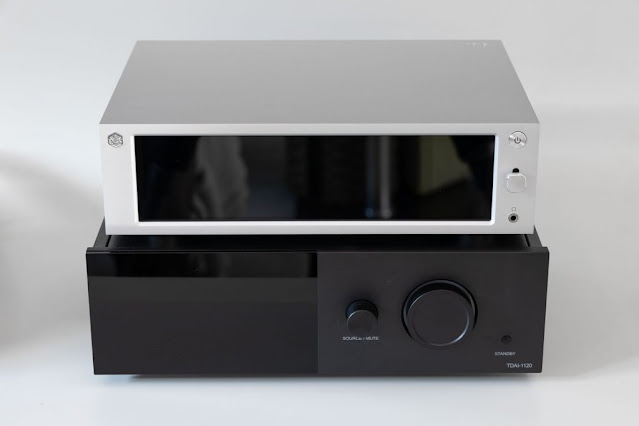

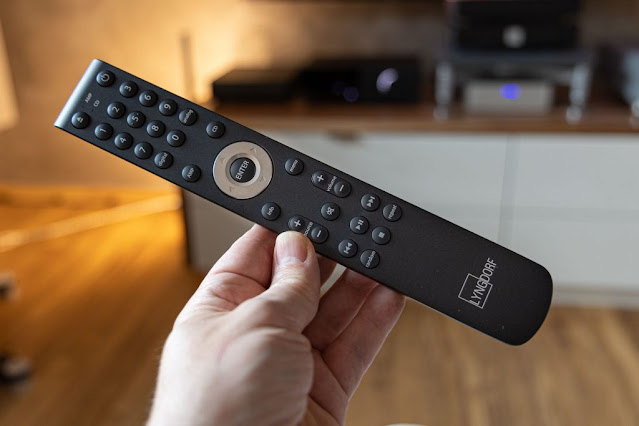

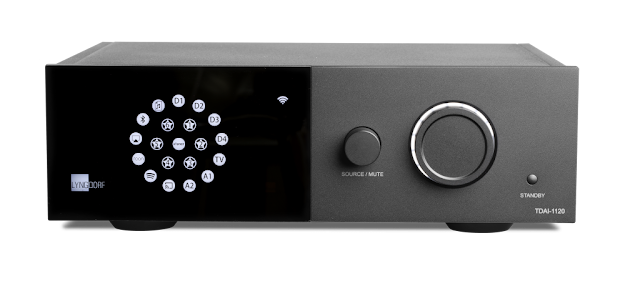

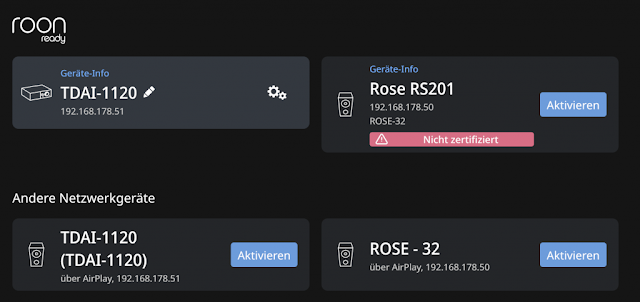
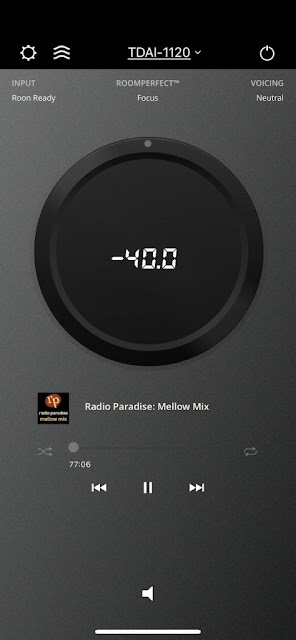
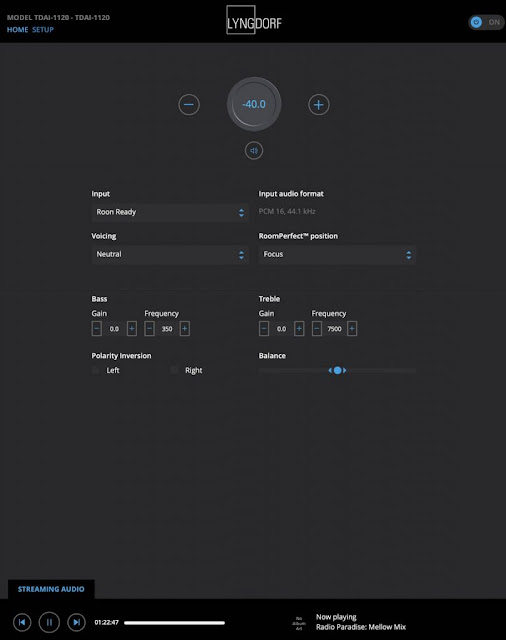
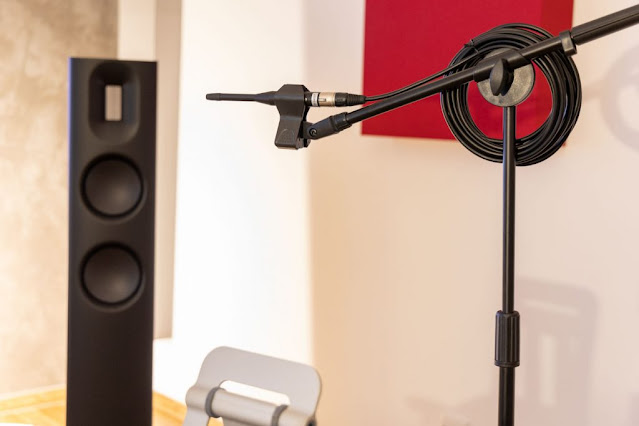
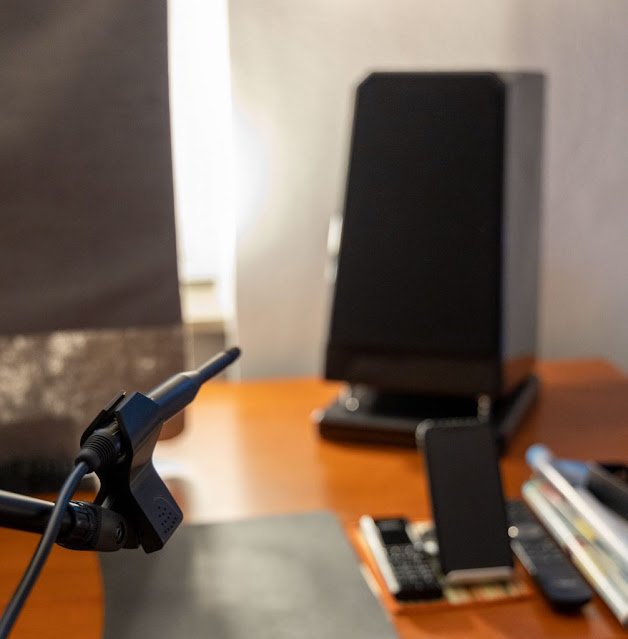












.jpg)



0 Comments